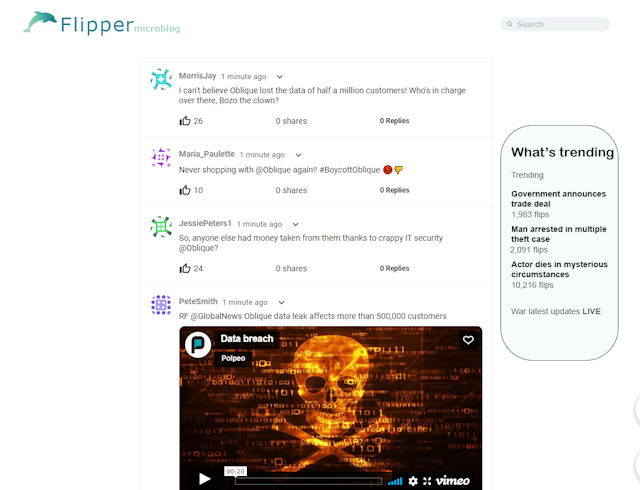Ready for a PR calamity? This crisis simulator can put your brand’s plan to the test
The Covid years have shown us that brands really weren’t prepared for crisis management. But how well can a brand really prepare for a PR disaster without experiencing one first?
Crisis management training firm Polpeo has created an intensely real simulator for brands to test their PR strategies. The Drum got to experience first-hand the stress-inducing effects of going through a simulated PR crisis.
Chief executive officer of The Social Element, Tamara Littleton and managing director at Carrot Communications, Kate Hartley, set up Polpeo in 2011. Littleton says Polpeo was founded because “brands at that time were really screwing up and getting their tone of voice wrong”.
Over the years, they’ve worked with clients in FMCG, government and oil and gas but more recently consumer companies have been calling on Polpeo to help prepare them for online brand damage. “The pandemic made people realize they weren’t ready for crisis management and didn’t know how to protect their reputation online,” Littleton says.
Consumers now expect brands to act on matters like Black Lives Matter, the Ukraine war and Roe v Wade. Just last month brands faced criticism for ingenuine activities around the Queen’s death and Center Parcs ended up in a PR pickle for shutting down to mark her funeral.
“With societal shifts, we have found more brands want to test their policies and stance on important matters,” she adds. Brands are wanting to understand how they might get ‘canceled and be ready with an appropriate response, Littleton says.
Advertisement
So, how does it work?
The “escape room” style simulator typically starts with a clogged notification box on a mocked-up social media site which reveals the unfolding brand crisis. It might be customers taking to ’Flipper’ to complain about a product or enraged ’SocialNetwork’ users accusing your brand of greenwashing, or a ’PictureGram’ hashtag calling out your lack of support for Black Lives Matter.

Polpeo tasks its staff to post in real-time, so the notifications box keeps aggressively pinging. You might start replying to customers to reassure them or give them instructions, but as more and more messages pop up it’s impossible to make individual replies.
As you scramble to get a grip of the social media backlash, journalists start calling you asking for comment. It’s time to get a press statement together and signed off.
Advertisement
Then the story breaks, first with BuzzNow and then the national press. The press line keeps ringing and ringing, and emails are flooding in all while your social sites are still on overdrive.
Polpeo staff are told not to be kind if you get the messaging wrong. Suddenly your well-thought-out press statement posted on your social channels and given to the media starts being negatively commented on and you are being called out for taking the wrong approach. “We are testing their tone of voice, so if they start getting stressed and start writing back loads of rubbish, we will attack them,” Littleton says.
Social media users start creating memes and gifs and vloggers start dissecting the crisis on Flipper. The whole situation is getting out of control and you are struggling to put out the fires. Then protestors (actors employed by Polpeo) start gathering outside the office chanting and holding banners.
Suggested newsletters for you
Adding to the social media storm a live feed from the protest pops up and now a journalist has gotten an exclusive with the leader of the activist group. There might also be a boycott – “everyone loves a boycott,” Littleton jokes.
Yep, actors really are drafted in. In the past Polpeo has orchestrated demonstrators to storm airfields and role-played explosions with injured actors covered in blood.
At first, the crisis team you’ve pulled together might be paralyzed and afraid to make a mistake. But eventually, they cobble together a strategy and start enacting a crisis plan. The tide starts to turn as social media users begin posting about your brand in a more positive light and fresh stories hit the press about the direction you’ve taken.
After about four panic-stricken hours, the simulator draws to a close and you get to sit down with your team and Polpeo to debrief. The simulator is designed to find the holes in a company’s existing crisis management so plans can be modified.
“The whole point is to try and help people build empathy and train them on how to go through a crisis and what it feels like and then test their processes,” Littleton says.
“It’s about how you work as a team and build a muscle memory or military training that if you go through a crisis and kept hold of your nerve you won’t be stressed out.”

